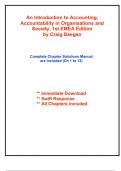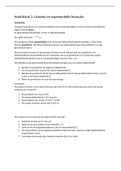Exam (elaborations)
Solutions for An Introduction to Accounting, Accountability in Organisations and Society, 1st EMEA Edition by Deegan (All Chapters included)
- Institution
- York College
Complete Solutions Manual for An Introduction to Accounting, Accountability in Organisations and Society, 1st EMEA Edition by Craig Deegan ; ISBN13: 9780170418737....(Full Chapters are included and organized in revere order from Chapter 12 to 1)...Chapter 1: What is accounting? Chapter 2: Organisa...
[Show more]




